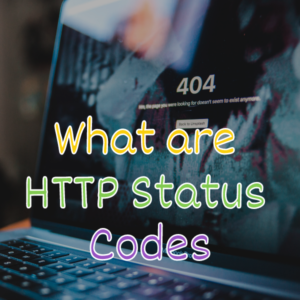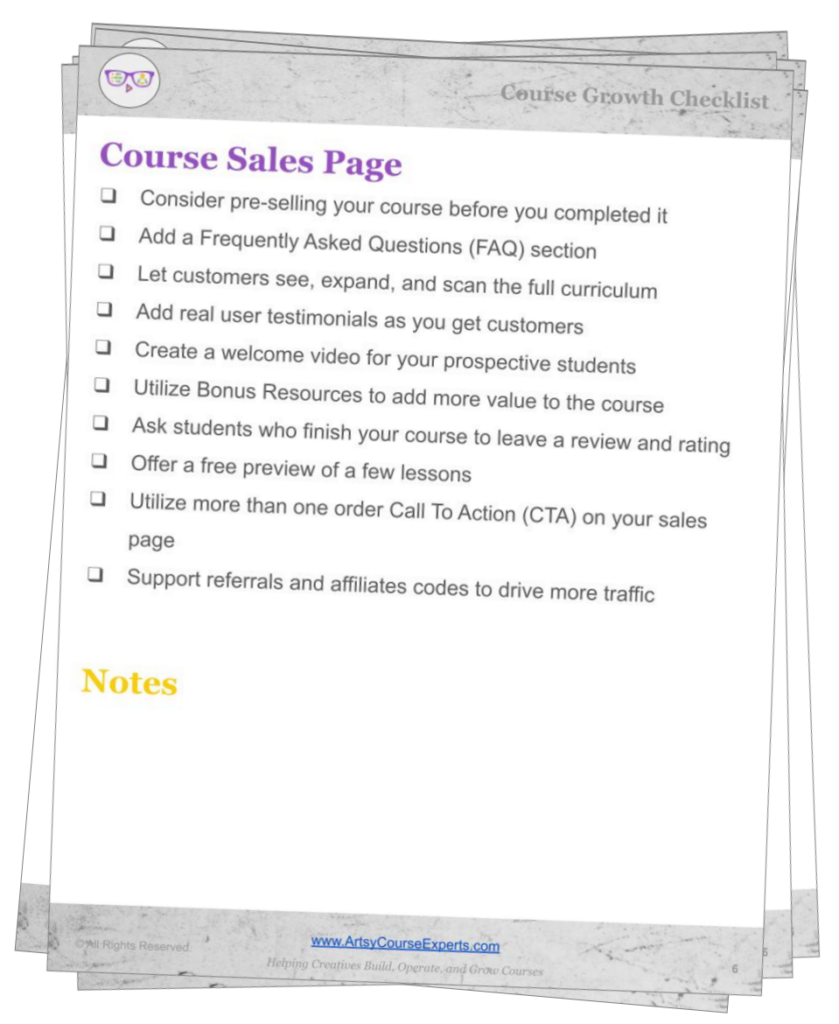Introduction To Online Quizzes
Online quizzes are a fun way to reinforce content and break up a series of online lessons.
In this article, we’ll go over all the different techniques for adding quizzes to your course so that your students love them and so that you teachers maximize your course creation investments.
What Is A Quiz?
Quizzes are short tests where students see one question at a time and are able to choose answers.
A good design lets students know if they’re right or wrong immediately after answering each question.
Quizzes aren’t extensive or serious like traditional school tests. In fact, some quizzes may not even show a final score.
The point of the quiz is to help verify, reinforce, or indirectly reteach key concepts from recent lessons.
Why Should Creative Teachers Use Quizzes?
Teachers should use quizzes to keep students engaged while providing another way for students to learn.
Quizzes can be a nice fun break from watching courses.
Students get to lean forward while taking a quiz and think about what they have learned. It can also let students think about the content and expand their perspective on the creative topic.
The gamification process in quizzes helps students feel good when they achieve multiple correct answers on their quizzes.
Facts About Course Quizzes
Having quizzes makes online course sales pages more appealing.
You will sell more online courses or be able to charge a higher price because quizzes offer extra value that you provide in your course.
Students that utilize quizzes have demonstrated that they have learned and retained more content than students who don’t use quizzes.
There is little to no documentation that quizzes hurt course sales or take away from learning.
Which Teachers Should Add Quizzes
All creative teachers that teach in the arts should find ways to use quizzes in their courses.
Here are some example course topics that can benefit from quizzes:
- Design, Illustration, Painting, Cullinary
- Makers, Crafters, Scuplters, Industrial Designers, Cosplay
- Sewing, Quilting, Fashion, Hat Designers, Hair Stylists
- Writing, Poetry, Editing, Copywriting, Proofreading
- Music, Singing, Danceing, Acting, Magic
- Photography, Video, Sound, Stage
Quizzes help verify and train your students in a fun and easy way.
While quizzes cannot train on every aspect of your trade, they can be very useful to verify that your students have learned the fundamental words and skills in your lessons.
How Students Feel About Quizzes
Some students really dread tests, especially long detailed oriented, boring tests.
But as adults taking courses on our own time and money, we don’t mind taking a light quiz to reinforce key terms and skills.
Many students also prefer quizzes that are easier and more fun than writing a large report. For example, quizzes that use pictures, sounds, or mouse/finger interactivity, connect the terms with lines, and multiple choice answers are easier and less painful.
How Many Quizzes To Include?
Many course systems will allow teachers to include any number of quizzes.
One approach to using quizzes is to include one bigger quiz at the end of the course, but this quiz often doesn’t cover enough of the topics. If you happen to make this quiz really long, then it turns into a scary and painfully long quiz. Also, students that have issues with long tests may not be sure which lesson to review in order to review the material.
If you choose to have a quiz associated with every single lesson, you will end up with potentially dozens of quizzes within your course curriculum. Thus an outline that has 25 lessons could scare students with a bloated agenda with nearly 50 items after adding individual quizzes. This technique allows teachers to offer very topical quizzes that cover the exact content immediately after each lesson, which makes it very easy for students to go back and review content, as well as retain a good working memory from the prior lesson to pass each quiz.
A good compromise is for teachers to use one quiz per module or section. Each of these modules is a bucket for 3-5 lessons. You can use one quiz at the end of each module to check that the key concepts of each lesson were understood. When using this technique, you can choose to review just a few key facts from each lesson. If you have 7 modules in your course, adding an end of module quiz will not bloat your curriculum. It will also not scare your students with too many quizzes, which should be a fun activity and not anxiety-provoking.
Not Using Quizzes In Your Course
A teacher can choose to not have any quizzes at all and that might be okay.
Perhaps the entire course consists of just a three to five video tutorials.
While we recommend the teachers include at least one and end of course quiz it’s not however it’s not required.
You may be building a free course or a mini course with a few lessons and you want limit the extra materials, templates, quizzes, and surveys. If this is the case, you can save the quizzes for the more expensive courses that you offer with more value added extras.
Alternatively, if you want to verify while avoiding tests, you could check that your students have learned their material by using end of course survey, assignment, or course reviews. For more information on end of course reviews, see Using Ratings and Reviews In Your Online Courses.
Where To Place Your Quiz(zes)?
Your quizzes should come after the lessons that provided the contents and answers for the each of the questions.
For creative courses, we prefer the structure of module lesson lesson lesson quiz as this provides the right balance of lessons to quizzes.
How to structure your content with quizzes:
- Module 1
- Module 1 – Lesson 1
- Module 1 – Lesson 2
- Module 1 – Lesson 3
- Module 1 – Study Guide
- Module 1 – Quiz
- Module 2
What Are Different Quiz Question Types
There are a variety of question types you can include in your quizzes.
Some question types are harder than others. For example a multiple choice question is harder than a true or false question.
Here are some common quiz question types:
- Multiple choice – choose between 3 to 5 answers
- True/False – choose between 2 choices
- Fill in the blank – enter a phrase or keyword
- Sort the sequence – Specify the order of answers
- Connect Lines or Drag an Drop – connect the left side part to the right side part
Not all course technology platforms have all question types, but most have multiple choice questions, which can work for a wide range of questions.
Quizzes Can Be A Fun Way Activity In Between Lessons
Quizzes can be a fun exercise that you include in your courses.
You can use quizzes to break up long-form content like videos and voice over decks.
Many lessons are a lean back experience we’re students are passively watching the course.
However, quizzes are an active lean forward activity to engage with the course.
Students will go from passive to active when taking your test your quiz
Creating Larger Question Banks
Some Learning Management Systems will let you store extra questions for each quiz.
When a student takes the quiz, they will see a subset of the available questions.
This allows students to get a unique set of questions if they happen to take the quiz again or if they compare with other students.
Teachers can use this to give their courses longevity by creating additional questions during creation or upon updates.
Whether To Randomize Your Questions And Answers
Many course systems allow you to randomize or shuffle your questions. This means that you will your students will rarely see questions in the same order as other students.
Sometimes as a teacher we may document the questions in a certain order but like to challenge our students to answer the questions in any order.
Some courses help students by showing questions in the same order in which they were taught, in order to teach and strengthen a preferred order of steps.
Depending on your modules, you may want to choose which quizzes use random questions versus predetermined questions.
Finally, whether you shuffle your questions or not, you should randomize your answers, so they appear in a different order each time they are seen.
Showing Hints For Tough Questions
Some course systems allow teachers to provide hints when students don’t know the answer or choose an incorrect answer.
A quiz with hints could allow students to click a button see a hint or automatically see a hint after a wrong answer so that students can learn during testing.
Providing Immediate Feedback
We recommend that your quizzes show immediate feedback to your students.
When students get an answer correct please let them know right away with a correct label and/or a green check icon.
However, when students choose the wrong answer they should see that it is not correct or the best answer and they should have the option of choosing another answer or selecting a hint. Remember, we want to be a friendly teacher or coach not a tough professor or drill sergeant.
Students should get immediate feedback and not have to wait to the end of the quiz. Having students take a 5 or 10 question test and get a score at the end does not help the students learn the content as fast.
Depending on your course technology you may have the opportunity to allow students to have the quiz open while they hunt around for the knowledge in your course. For example, they could have one browser tab open with the quiz and another browser tab reviewing your videos, educational slides, or study guides. While this may seem like cheating this could really help many students hunt down the answers that they need to learn.
More Businesses Are Using Interactive Quizzes
You should be aware that more and more websites are also using quizzes to provide relevant and entertaining content for their visitors.
Blog may use good articles to provide information to their readers, followed by a fun quiz to learn about the visitors profile or needs.
So just like websites are using quizzes to be more interactive, courses can also use quizzes to keep students engaged in between long form content.
Quizzes Versus Surveys
Courses use the beginning of class surveys and end-of-class surveys to collect information about students.
For example, surveys are used to collect information such as:
- Prior skill level
- Current challenges
- Career goals
- Issues with the lessons
- Feedback about the teacher
However, quizzes are used to confirm specific skills after each lesson or after a collection of lessons in a module.
Quizzes often use multiple choice questions or other types of questions that can be used to determine if an answer is correct. Whereas surveys often use open text edit boxes that may not necessarily have a right answer.
Quizzes use your content and resources to lead to a generalized answer for your students, but surveys are personal and include answers that vary across students based on their prior skills and how they engaged with the course.
Quizzes Versus Assignments
An assignment is something students create and sometimes submit to teachers and other students.
Assignments are often requested and submitted at the end of a module or end of a course. In some cases, there may be several modules with assignments throughout a course.
An assignment can be almost anything, but is usually recorded and transferred as a document, photo, sound, video, or other media file.
Students can submit an assignment by sending a direct message or posting it into a course discussion group or sending an email
Teachers can review the assignment and provide feedback to students.
Here are some examples of class assignments:
- Paint a nature scene
- Create a bracelet using shells
- Quilt a pattern
- Introduce a character backstory
- Perform a piece of sheet music
- Take a photo of a moving animal
Again, the quiz is used to verify key lesson skills as a mini test, whereas the assignment is used to demonstrate the application of the skills.
Quizzes Versus Certification
Some courses provide the benefit of providing a certificate for students that complete the course.
This allows students to use that certificate to hang it up at their workplace, find a new job, or add it to their resume.
As the course teacher, you can configure your system to provide the certificate immediately or you can provide it after a student has completed some percentage of the lessons.
You can also choose to use a medium to large quiz at the end of your course that once completed satisfactorily earns your student the final certificate.
It’s possible that you could also look for a passing grade across multiple quizzes in your course. This is more of a college model versus an online course enrichment model.
Nevertheless, students value certificates so if you can include one you should. Some systems have a built in certificate system, but if your system doesn’t you can make one out of PDF landscape template or even use a third party.
Common Mistakes With Quizzes
One of the biggest mistakes you can make with your quizzes is making them too hard.
You should make your course quizzes just right so that they are not too easy and not too hard.
If you make the quizzes too easy, students may zone out during your training material.
However, if you make your quizzes too hard, students will feel defeated and frustrated.
Think of quizzes as check-in gates and ceremonious bridges at the end of modules.
Alternatives To Quizzes
You may be curious if you can provide quizzes in a way that isn’t as scary and avoids curriculum speedbumps.
One idea that you can consider is simply including a list of questions for your students.
You can put these questions in a standalone PDF or at the end of a lesson or module study guide. You can even put all the various module questions in one large document if you want to avoid having multiple quiz documents.
The answers can be included on another page or at the end. You can even layout your answers like a puzzle book where you put the answers upside down on the bottom of the page.
Another idea to reduce anxiety around quizzes is to explicitly label your questions as optional or supplemental.
While a sheet of questions is not as engaging and not interactive it could provide a quiz option when your course technology system doesn’t have a quiz feature.
Quizzes Help Students More Than They Scare Them
Remember students develop better skills with quizzes. It’s not a bad thing. Quizzes are good things.
Students that take quizzes will inevitably get additional training and reinforcement for better results.
As a teacher, it should be seen as a good thing that you’re providing helpful training tools like quizzes.
Remember you’re also authoring the quiz questions, so you get to write them in a gentle way that confirms and aligns with what you have taught them in your lessons.
Quizzes Have Risks and Limitations In Certain Cases
As a remote online course teacher, you may be limited with what you can teach and confirm on certain topics.
This especially is true for skills that can be slightly dangerous like cooking.
For example, you may not be able to teach some of the techniques used in cooking when working on multiple stove top flames but you can supplement your lessons with important information like how to use a food thermometer and the right way to work with an oven.
Here are some topics that could be hard to train or test:
- Working with hot stoves and ovens
- Bonding metals with a soldering iron
- Photography or filming while moving
- Working with cooking knives or exacto knives
Some training programs use visual simulations to help students and workers. So you could try to use videos or pictures for quiz questions or answers so that students can choose the best and safest way to do something.
Finally, to legally protect yourself, you may want to use some text in your footer or at the end of your quiz that’s a reminder about safety or industry guidelines.
Use Your Kind Teacher Voice For Questions And Answers
As the teacher, you get to decide the tone and complexity of your quiz questions and answers.
You get to decide if your questions are friendly like a coach or a parent. In this mode, you guide your students towards the right answers using easier prompts and supplemental information.
There are times when some quizzes use formal language like in a standardized test. This is useful when you are preparing your students for a standardized test with serious questions.
The tone of the quiz should also be consistent with your personality and the tone of your lessons and supplemental content likes study guides. This is also important if you have a team of individuals assemble your courses. When multiple teachers work together, they should agree on a tone of voice for all content.
What To Put In Your Quiz
The questions in your quiz should come from content that was taught in the prior lessons.
You should double-check that questions and answers in the quiz come from your lessons. A student should be able to go back to your lessons and find the answers to each of your quiz questions.
As an instructional designer, you will strategically teach your lessons in such a way that you can extract out content for use in study guides and quizzes. A good design will use similar title words from the lesson slide in the question stem.
Planning New Courses
When thinking about creating a new course, you should also think about if you are going to offer quizzes in your course.
Some of the strategic questions include:
- Does your technology platform support quizzes?
- How many quizzes should you have?
- Which kinds of question types will you use?
- What level is your course and what level of difficulty should your questions be?
Once you decide to use quizzes, you can update your modules to include placeholders for your future quizzes.
While creating your content like video lessons and presentations you will naturally create topical lessons or slides for each topic. These topics can be used to create questions in your quizzes.
If you use one quiz per module (collection of lessons), then your quiz questions will probably pull 1 or 2 questions from each lesson. If you use one quiz per lesson, then your quiz will probably utilize questions that come from each of your lesson topics.
The most important part is while you develop your core content, remember that from each topic in this content you will create videos, study guides, and quizzes.
Quizzes Add Real Value To Your Course
Quizzes are not hard to develop and they are helpful and thus valuable to your students.
As a teacher, you should advertise that you provide quizzes on your online course sales page.
If you provide more than one quiz, like one quiz at the end of every module then you should advertise that as well. For example, a course could state that it includes 8 module quizzes.
You can even go so far as to show a small image of the quiz in your online course sales page. The image can be clickable so that visitors can expand it to see a specific quiz question and answer.
If your course is light on content, then you can even use your quizzes as one of the bonus materials included with your course. As you develop more bonus content like templates and checklists you can remove the quizzes from your bonuses and add them into your course features list.
Quiz Technology Factors
Course technology systems generally utilize two techniques to keep track of the student’s online sessions.
The first approach leverages memory on your student’s device such as their laptop computer browser. This is how your computer uses cookies to offer to remember your course login and password every time students visit the course. Also if the quiz is created as a web page, then the student’s device downloads the page content with question, answers, and hint. In some cases, the client may handle the processing of the answer verification on your browser or in other cases it submits the response to the web server to download the next step.
In the second approach, course systems utilize web server data and processing which means that the clients are thin clients and don’t have the entire question bank in memory and they don’t verify the score. In this case, server-based clients only show whatever is required for the current screen then after the student enters information and clicks a button then the server provides and update that tells the student what feedback to display like a correct icon or what other screen to display like the next question.
Most courses automatically save student quiz progress as well as their answers to individual quiz questions. If a student were to lose internet access, after regaining internet connectivity they would be able to continue where they left off without starting over.
This cool server-side data feature also helps when students switch devices or go mobile. For example, they should be able to switch from there desktop to their mobile phone and continue where they left off in the quiz.
Being Creative With Limited Course Technology
If you don’t have a powerful Learning Management System with quizzes, you can find get creative and use surveys.
For example, you can create a quiz by using an online survey system like Google Forms, Survey Monkey, or TypeForm. The survey could use simple text questions and multiple choices for answers. At the end of the survey, you could provide a summary of all the questions and answers.
In some cases, these survey platforms do offer a “test” ability with scores.
Grading Quizzes Automatically
The cool thing about using technology for quizzes is that all the answer checks are automatic and instant.
Students can take the quiz at any time and they don’t have to wait for teachers to grade tests a few days later. This also helps you sell your courses effectively to other countries in a potentially wide range of time zones.
When students get stuck, they can use the pre-programmed hints to provide guidance in real time, and if necessary they can leave an online message for the teacher or other students for help.
Quiz User Experience Considerations
When creating, styling, and laying out your quiz, you should think about the usability of your quiz on different devices, browsers, and use cases.
For example, is your quiz mobile friendly? Does it use “responsive” design techniques to scale up and down on desktops, tablets, and phones.
Another consideration is does the quiz layout work in both horizontal and vertical orientations, depending on how a student is viewing the course.
Finally, you should think about accessibility which insures that users with disabilities and impairments can use your course and quizzes. Some essential rules include having high contrast colors and alt labels for photos, links, and buttons. For more information, see the Web Accessibility Initiative.
International Considerations
If your course system provides automatic translations of your quizzes that could really help your international sales.
However, if your system doesn’t provide translations, you can still offer PDF documents with translated questions.
Additionally, try to speak your native language plus industry words, but avoid phrases that don’t translate well literally.
Here are examples of phrases that don’t translate well:
- Try to be the quarterback when you
- Like a pig wearing lipstick
- With people across the aisle
- Think of a red light
Handling Cheaters
Don’t get stressed out if your students use help to answer your quizzes.
Your students may approach learning in different ways. Some of your students may utilize different aids to help them get through your quizzes.
Here are some ways that students use to pass quizzes:
- Rewatch videos
- Review study guides
- Search on web
- Utilize a book
- View help on a software
In the end, your students are leveling up their skills. So be proud that you have helped them reach the next level with your course.
Handling Frustrated Students
Remember teachers provide quizzes as an extra tool to help students learn effectively. You do not want to frustrate your students.
Students shouldn’t be required to take a quiz. The quiz is there for them to do a quick review maybe learn a little bit more and then proceed. Also the quiz is there to change up the course delivery with an active exercise.
There will be some students that you choose to skip over the quizzes and that’s okay. Think of this as a book that has questions at the end of every chapter. Some students will skip over them but other students will skim or try their best to absorb the new material.
Students may need to learn your skills in a certain order, so teachers should allow content and quizzes to be taken out of order. Online course teachers shouldn’t block access to other lessons requiring students to completely pass a prior quiz before seeing other content.
In many cases, students have paid for online courses out of their own pocket so we should give them full access to all the learning resources just like having access to a book that they own.
Creative Ways To Offer A Quiz
What if you used pictures in your quizzes? Pictures can make quizzes more fun but still be very educational and helpful in skill development.
A question could have a text prompt with a supporting image. For example,
Which kind of paintbrush is this?

- Round
- Angle
- Mop
- Rigger
- Fan
Another approach to using pictures could be where the question uses text but all the answers are in pictures form.
While you can make your quiz entirely pictures, it may be best if you used a mix of text and photos. This way depending on the question, you can utilize the best type of question.
What Are The Best Courses Doing With Quizzes?
The best online courses are providing mostly content and training with quizzes sprinkled at the end of modules.
While it may be easy to create short quizzes after every lesson, this is not the best student experience for most courses. It also clutters the overall course curriculum.
Many students enjoy watching a few short lessons in a row, followed by a break at the end of the module. The break could be literally a 5-minute snack and bathroom break, or by changing the mode to reviewing a study guide, doing a small exercise, or taking a short review quiz.
Final Tip For Teachers
One last tip is to keep your quizzes short.
Try to keep your quizzes short with 3, 5, or 10 questions per quiz.
Using 10 or more questions may overwhelm many students and may not provide real value beyond your course materials.
When designing your content, think about how every few minutes of training video or every few content slides maps to quiz questions.
Remember, a good course will use multiple modules and multiple quizzes so you don’t have to put all your questions in one quiz. You can build upon prior concepts and include more advanced questions in later quizzes.
Conclusion – Adding A Quiz To Your Course
Quizzes are a great addition to any online course, especially courses in the arts like music, writing, crafting, sewing.
Since most course technology platforms already include quiz makers, a teacher should be able to add at least one quiz quickly, and ideally one quiz per module.
Need Help With Your Quizzes?
If you need some help with setting up your quizzes, let talk about how we can help you with your course tech. We can help you with your quiz tech, sales page, content strategy, and automation.














